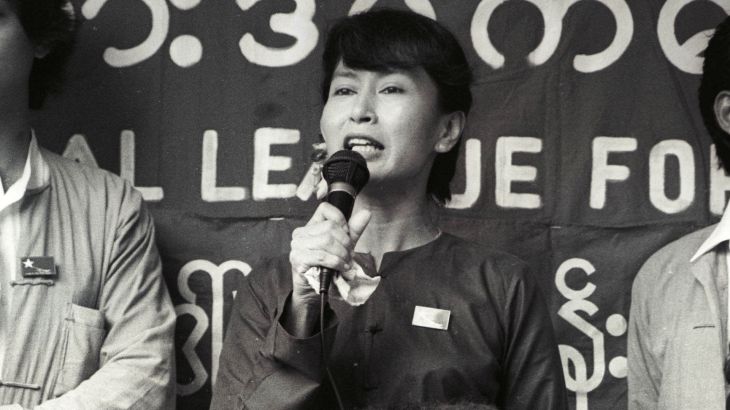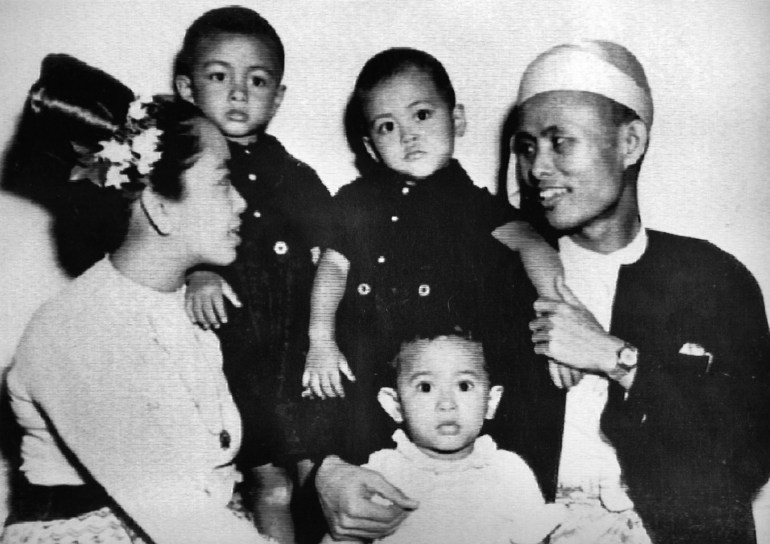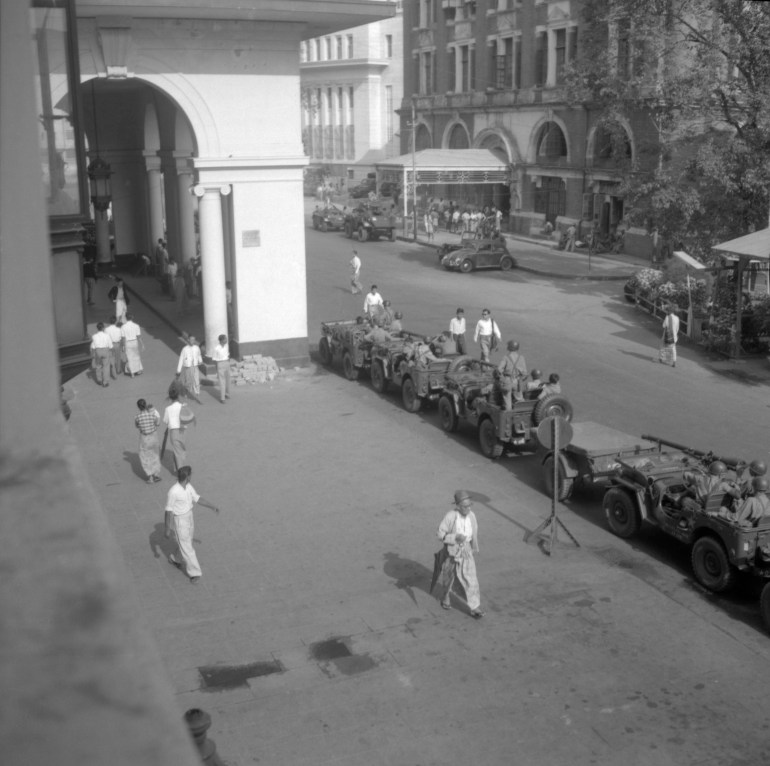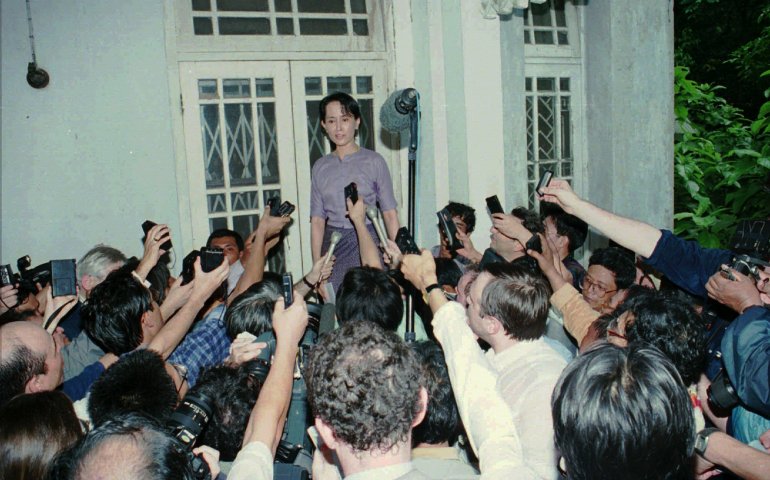Myanmar: Timeline of a fragile democracy
Myanmar’s military has a long history of involvement in the country’s politics.

Myanmar’s military seized power on Monday after detaining leader Aung San Suu Kyi and other senior figures in the ruling National League for Democracy (NLD) in a series of early morning raids.
The people of the Southeast Asian nation are no strangers to military rule.
Keep reading
list of 4 itemsMilitary coup in Myanmar, Aung San Suu Kyi detained
Could Myanmar’s military stage a coup?
Myanmar’s newly elected parliament set to meet amid coup threats
The country was controlled by the armed forces until they began to cede power a little more than 10 years ago.
“The military has always operated in an opaque way,” said Al Jazeera’s Florence Looi, who has reported extensively from Myanmar. “It has in many ways considered itself above the law.”
Here is a timeline:

1947
Aung San, who fought against the Japanese and led the country to independence from Britain, is assassinated. Aung San Suu Kyi, is his only daughter and youngest child.
1948
Myanmar achieves formal independence under President U Nu.
1962
The military under General Ne Win takes power in a coup. All opposition parties are banned, and the military takes control of all businesses and industries. Its economic policies and deliberate isolation of the country lead to economic stagnation and ruin.

1988
Pro-democracy protests in August are met with a brutal military crackdown and as many as 5,000 people are killed, according to civil society groups. In September, Aung San Suu Kyi founds the National League for Democracy (NLD).
1990
Under international pressure the military calls an election, which the NLD wins by a landslide. The military refuses to recognise the results or hand over power and Aung San Suu Kyi is arrested and placed in house arrest.
1995
In July, Aung San Suu Kyi released from house arrest.

1997
Myanmar joins the Association of Southeast Asian Nations (ASEAN).
2000
Aung San Suu Kyi detained again as Europe tightens sanctions on Myanmar.
2002
Aung San Suu Kyi released again and allowed to travel around the country.
2003
Aung San Suu Kyi is arrested again – supposedly for her own protection – after an attack on her convoy.
More than 70 of her supporters were beaten to death in the May attack by the Union Solidarity and Development Association (USDA), a political militia backed by the military, according to the Burma Campaign UK. The USDA was later transformed into the Union Solidarity and Development Party (USDP), the military’s proxy party in parliament.
2006
The military announces it has moved the capital to Naypyidaw, a new city it had built in secret midway between Yangon and Mandalay.
2007
Thousands take to the streets of Yangon in protests led by Buddhist monks, after the military government removes fuel subsidies. Dozens are killed in the subsequent military crackdown.
2008
The process of democratisation begins with a controversial constitutional referendum that took place only two days after Cyclone Nargis swept across the Irrawaddy Delta leaving tens of thousands dead.

2010
The USDP wins elections that are boycotted by the NLD. Aung San Suu Kyi is freed from house arrest in November.
2012
Fighting between Buddhists and Muslims in western Rakhine State leaves hundreds dead and tens of thousands of Rohingya displaced.
2015
The NLD wins a general election by a landslide and Suu Kyi becomes leader in a specially created role of state counsellor.
2016
Unrest flares again in Rakhine after Rohingya fighters attack three police border posts, killing nine police officers. A military crackdown prompts tens of thousands to leave for neighbouring Bangladesh but also to Malaysia and Indonesia.
2017
A brutal military crackdown in Rakhine drives more than 730,000 Rohingya into Bangladesh. The United Nations says the campaign of mass killing, rape, and arson was carried out with “genocidal intent”, which Myanmar denies. Suu Kyi later defends Myanmar against genocide charges brought at the Hague.
2019
Fighting begins in Rakhine between government troops and the Arakan Army (AA), an ethnic Rakhine group seeking greater regional autonomy. Suu Kyi urges the army to “crush” the rebels.
2020
The NLD claims a resounding victory in parliamentary elections taking more votes than it did in 2015.
The USDP demands a rerun of the election and calls for military help to ensure fairness, alleging irregularities.
2021
January 26: Army military spokesman Brigadier General Zaw Min Tun warns the armed forces will “take action” if the election dispute is not settled and declines to rule out staging a coup, asking the election commission to investigate voter lists it said contained discrepancies.
January 28: The election commission rejects allegations of vote fraud, saying there were no errors large enough to affect the credibility of the vote.
January 30: Myanmar’s military says it will protect and abide by the constitution and act according to the law.
February 1: The military imposes a state of emergency and says power has been transferred to military chief Min Aung Hlaing, after Aung San Suu Kyi and other senior government officials were arrested in a series of early morning raids.